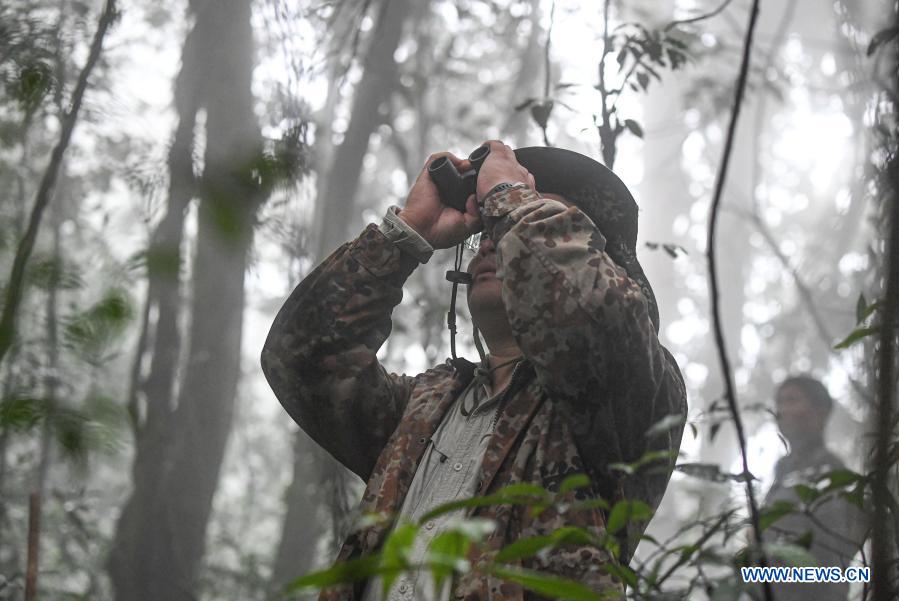
A gibbon surveyor observes with binoculars in the tropical rainforests on Bawangling Mountain in south China's Hainan Province, Nov. 16, 2020. Known as the world's rarest primates, Hainan gibbons are increasing in number thanks to an improved environment. Latest data from the province's forestry department suggests there are 33 gibbons living in five families, a threefold rise in population from the 1970s. The black-crested apes can only be found in the Bawangling National Nature Reserve on Hainan Island. They live in rainforest trees over 10 meters tall and rarely set foot on the ground, making captive breeding difficult. (Xinhua/Pu Xiaoxu)
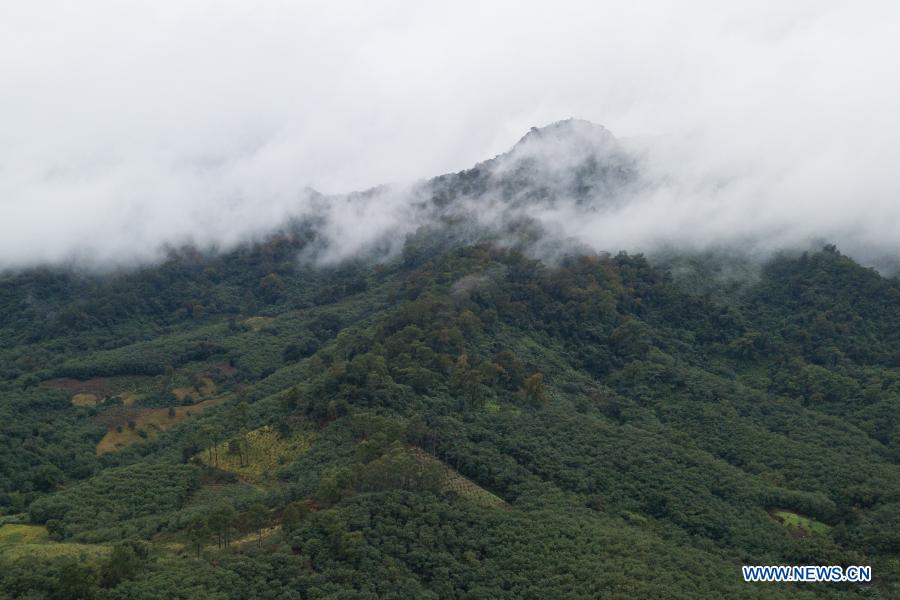
Aerial photo taken on Nov. 15, 2020 shows a habitat of Hainan gibbons in the tropical rainforests on Bawangling Mountain in south China's Hainan Province. Known as the world's rarest primates, Hainan gibbons are increasing in number thanks to an improved environment. Latest data from the province's forestry department suggests there are 33 gibbons living in five families, a threefold rise in population from the 1970s. The black-crested apes can only be found in the Bawangling National Nature Reserve on Hainan Island. They live in rainforest trees over 10 meters tall and rarely set foot on the ground, making captive breeding difficult. (Xinhua/Pu Xiaoxu)
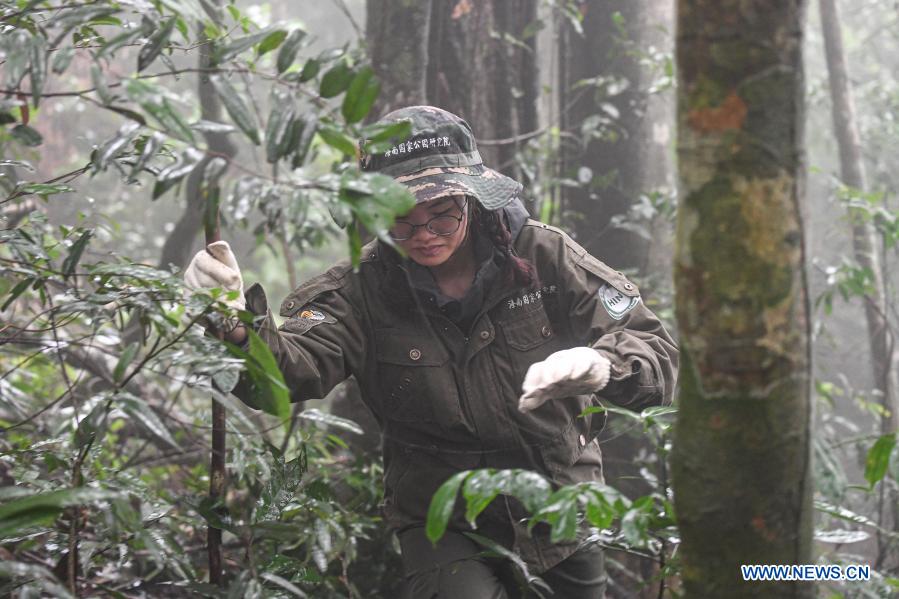
A surveyor searches for samples of gibbon forages in the tropical rainforests on Bawangling Mountain in south China's Hainan Province, Nov. 16, 2020. Known as the world's rarest primates, Hainan gibbons are increasing in number thanks to an improved environment. Latest data from the province's forestry department suggests there are 33 gibbons living in five families, a threefold rise in population from the 1970s. The black-crested apes can only be found in the Bawangling National Nature Reserve on Hainan Island. They live in rainforest trees over 10 meters tall and rarely set foot on the ground, making captive breeding difficult. (Xinhua/Pu Xiaoxu)
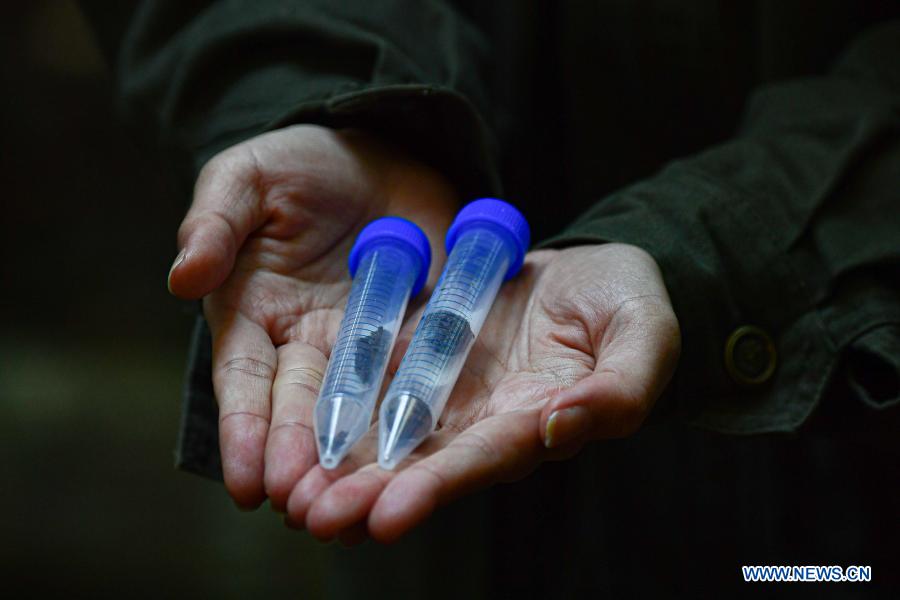
Photo taken on Nov. 13, 2020 shows samples of gibbon faeces collected by surveyors in the tropical rainforests on Bawangling Mountain in south China's Hainan Province. Known as the world's rarest primates, Hainan gibbons are increasing in number thanks to an improved environment. Latest data from the province's forestry department suggests there are 33 gibbons living in five families, a threefold rise in population from the 1970s. The black-crested apes can only be found in the Bawangling National Nature Reserve on Hainan Island. They live in rainforest trees over 10 meters tall and rarely set foot on the ground, making captive breeding difficult. (Xinhua/Pu Xiaoxu)
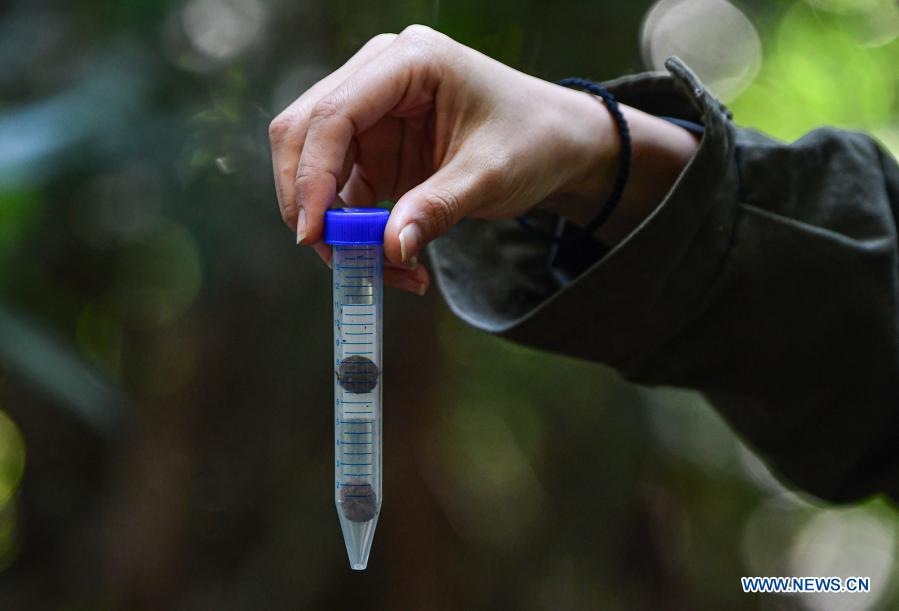
Photo taken on Nov. 13, 2020 shows samples of gibbon faeces collected by surveyors in the tropical rainforests on Bawangling Mountain in south China's Hainan Province. Known as the world's rarest primates, Hainan gibbons are increasing in number thanks to an improved environment. Latest data from the province's forestry department suggests there are 33 gibbons living in five families, a threefold rise in population from the 1970s. The black-crested apes can only be found in the Bawangling National Nature Reserve on Hainan Island. They live in rainforest trees over 10 meters tall and rarely set foot on the ground, making captive breeding difficult. (Xinhua/Pu Xiaoxu)

Gibbon surveyors trudge in the tropical rainforests on Bawangling Mountain in south China's Hainan Province, Nov. 12, 2020. Known as the world's rarest primates, Hainan gibbons are increasing in number thanks to an improved environment. Latest data from the province's forestry department suggests there are 33 gibbons living in five families, a threefold rise in population from the 1970s. The black-crested apes can only be found in the Bawangling National Nature Reserve on Hainan Island. They live in rainforest trees over 10 meters tall and rarely set foot on the ground, making captive breeding difficult. (Xinhua/Pu Xiaoxu)

Photo taken on Nov. 15, 2020 shows samples of gibbon forages collected from their habitats in the tropical rainforests on Bawangling Mountain in south China's Hainan Province. Known as the world's rarest primates, Hainan gibbons are increasing in number thanks to an improved environment. Latest data from the province's forestry department suggests there are 33 gibbons living in five families, a threefold rise in population from the 1970s. The black-crested apes can only be found in the Bawangling National Nature Reserve on Hainan Island. They live in rainforest trees over 10 meters tall and rarely set foot on the ground, making captive breeding difficult. (Xinhua/Pu Xiaoxu)

Photo taken on Nov. 12, 2020 shows a gibbon swinging between branches in the tropical rain forests on Bawangling Mountain in south China's Hainan Province. Known as the world's rarest primates, Hainan gibbons are increasing in number thanks to an improved environment. Latest data from the province's forestry department suggests there are 33 gibbons living in five families, a threefold rise in population from the 1970s. The black-crested apes can only be found in the Bawangling National Nature Reserve on Hainan Island. They live in rainforest trees over 10 meters tall and rarely set foot on the ground, making captive breeding difficult. (Xinhua/Pu Xiaoxu)
